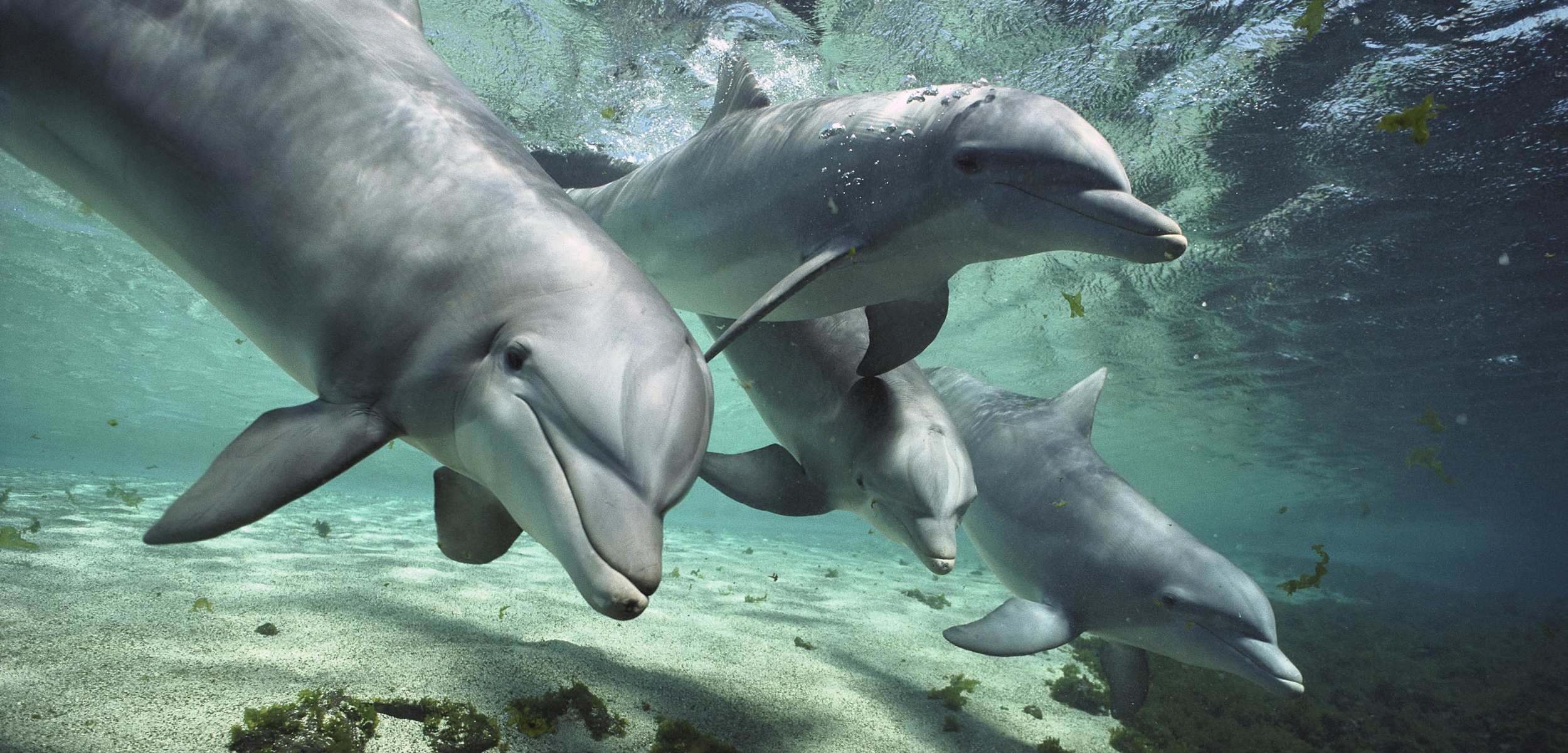Caller ID for Dolphins
Researchers have developed an algorithm that identifies species by their calls and could help make population estimates.
Article body copy
Dolphins are a chatty bunch—they click, whistle, and squeal. These frequent vocalizations are key to dolphin communication, and, for clever researchers, a window into their world. But there’s a wrinkle in dolphin speech that makes it particularly tricky for human eavesdroppers: the myriad dolphin species—from bottlenose to spinner to striped—tend to sound roughly the same. But a team of scientists has worked out a new kind of dolphin caller ID that uses big data to bring some order to the orchestra.
A team of researchers led by US National Oceanic and Atmospheric Administration bioacoustics expert Shannon Rankin has recently developed a new computer algorithm that can automatically identify a dolphin’s species just from its calls. The algorithm, named BANTER (for bioacoustic event classifier), can identify a dolphin’s species 84 percent of the time—a big improvement over traditional methods.
Trying to interpret acoustic recordings isn’t new, but previous efforts have largely focused on tracking one species or call type at a time. Rankin’s breakthrough came when she teamed up with a geneticist, Frederick Archer, who was used to working with large amounts of data.
Together, Rankin, Archer, and their colleagues developed their algorithm, which they tested using four months of recordings made off the west coast of the United States. The data set represented nearly 1,000 hours of dolphin recordings, including more than two million individual whistles, echolocation clicks, and “burst pulses”—fast trains of clicks used for communication.
Rankin and her colleagues only used data from species they detected at least twice—one detection was used to train the algorithm, the other to test it—and whose identities were confirmed visually during the surveys. Because of these limitations, only five dolphin species were ultimately represented in the study, but Rankin is confident the method could be scaled up.
Being able to identify a dolphin’s species opens the door to making population estimates using only acoustic recordings, says Rankin. Acoustic monitoring—using underwater microphones to listen for calls—could provide a much more efficient way to track dolphin activity. And, having accurate population counts is vital.
“We need to study [dolphin populations] so that if something happens, like an oil spill offshore, and 40 dolphins are killed, we know what that means,” says Rankin. “If it’s out of 10 million dolphins, maybe it’s not terrible. But if it’s out of 100 dolphins, then you’ve just killed off a large part of the population.”
Rankin also hopes her work will eventually be useful for animals other than dolphins. “I heard a talk once by someone trying to listen to a cacophony of monkey sounds in a forest where there’s high diversity, and I’m excited because I think this approach will work in those kinds of situations,” she says.
“Humans used to be better at this kind of task than computers, but now computers are starting to show us how it’s done,” adds Rankin. “I suppose we’re in the job of putting ourselves out of business.”

